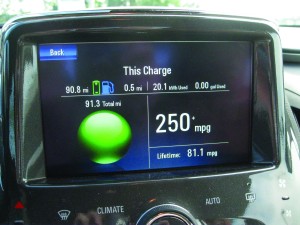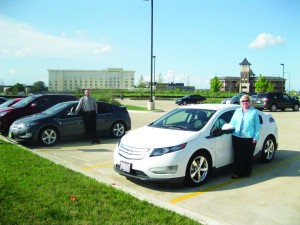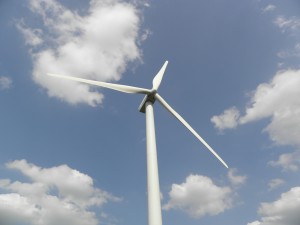Most people would say they value the environment and want to preserve it for future generations. However, not everyone is familiar with how to do that. I will give a few suggestions that not only will help you be environmentally friendly but also will save you money either directly or indirectly.
Most people think of recycling as the most common way to care for the environment. East Peoria is fortunate to have a free curb side recycling program that collects paper, cardboard, plastic (#1-5,7), aluminum and tin. If you live where you can’t get recyclables collected, save them and drop them off at a variety of drop off locations in the Peoria area. By recycling, you are diverting trash from landfills which will slow the increase of garbage dumping fees and slow the depletion of natural resources. Reprocessing recyclables also uses significantly less energy than creating new items from raw materials.
In addition to recycling, shoppers should “precycle.” This is a practice of purchasing products with the waste stream in mind. Say to yourself “How will I dispose of this container?” before making your purchase. The following are some tips. Buy in bulk will reduce the total amount of packaging. Only purchase items packed in recyclable materials and post consumer content packaging. Avoid excessive plastic wrap and Styrofoam.
Use “off peak” electricity. Lowering the electrical demand during peak times will save the electrical companies from having to produce as much electricity during peak times (saving on pollution) and will save on stress on our already dated electrical grid system. You can even sign up to pay an hourly rate for electricity to give you an incentive to use off peak electricity. Go to powersmartpricing.org for more information.
Some other easy things you can do to help the environment:
- Wash your baggies and reuse them. You can purchase a baggie drying rack relatively cheaply and you will stretch the life of your baggies.
- Don’t let your car idle. The gas used in idling for 10 seconds is equal to the gas used in restarting your car. Also, avoid drive through lines. Park, turn off your car, and walk into the restaurant or bank.
- Set your water heater to 120 degrees.
- Use an adjustable thermostat and adjust the heat and air to be used less when gone for extend periods during the day or while on vacation.
- Pull down shades or close blinds to limit heat entering the windows during the summer.
- Use cold water for washing clothes. Most germs and bugs are killed in the drier and not during the wash cycle even when using hot water.
- Take shorter showers or turn off the water when sudsing.
- Replace incandescent lights with LED lights. They cost more but last much longer than even CFL bulbs and give off better light. Each LED light bulb saves about $130 over its 23 year life versus incandescent bulbs.
- Replace any refrigerator older than 1993. Ameren will give you a rebate and you will save a great deal on electricity with a newer Energy Star model.
- Buy a front load washing machine which uses about 50% of the water and electricity as top load washers. They also require less detergent.
- Take the stairs instead of the elevator. Not only is it healthier, but saves on the electricity required to lift the elevator. Same goes for automatic doors. Use manual doors if that is an option.
- Bring your own containers for leftovers when dining out.
- Buy locally produced foods and goods. It helps the local economy and cuts down on transportation emissions.
- Use native vegetation or landscaping instead of lawns. Saves on law treating chemicals and exhaust from lawn mowers.
- Install rain barrels to water gardens and landscaping.
As you can see there are many ways that we can lessen the impact on our planet. Many are free. Many will save money in the long (and not so long) run. Please save this article and stick to your fridge. Consider committing to at least three of the above bullet points during September and add an additional one each month thereafter. Every little bit helps to preserve the planet for generations to come.





